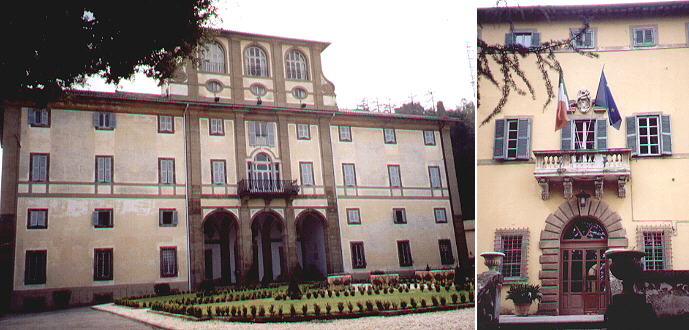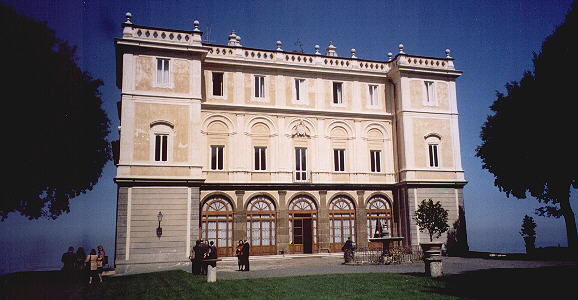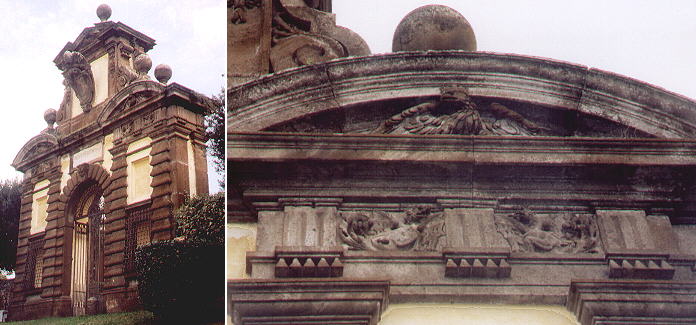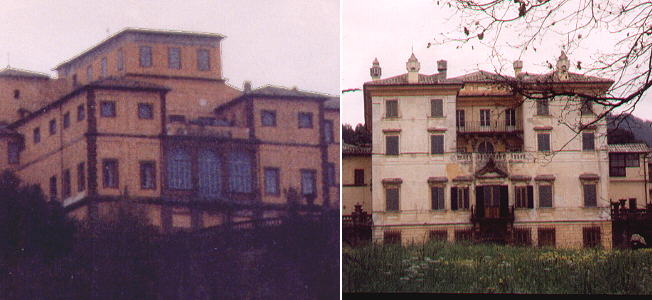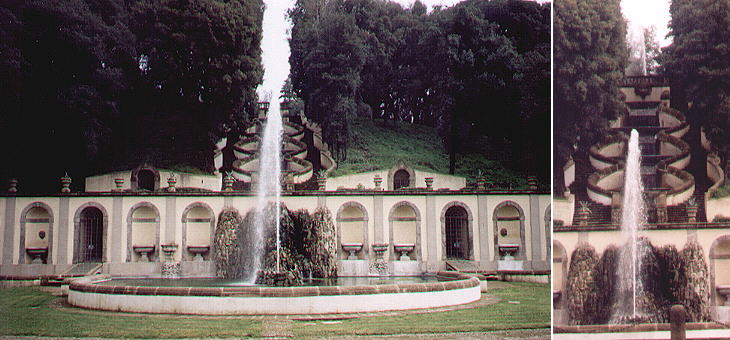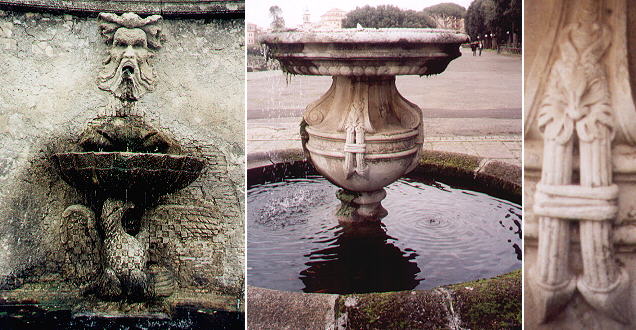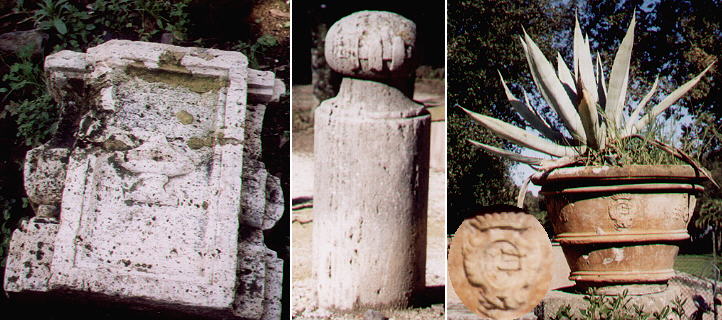  Giuseppe Vasi's Digression - Frascati - part two: the Villas - page two
In this page:
Some of the villas are now used for a different purpose: Villa Tuscolana or la Rufinella was almost entirely rebuilt in 1740 by the Jesuits to become the summer residence of Collegio Romano. It is now a hotel. Villa Sora, named after one of the titles of the Boncompagni family, was built in the second half of the XVIth century. It was sold by the Boncompagni Ludovisi in 1896; it was transformed later on into a Salesian school. Villa Grazioli
Villa Grazioli is located near Grottaferrata and it enjoys a particularly fine view over Rome. It was modified in the XIXth century and its façade has a coat of arms of pope Gregorius XVI (1831-46). Today it is a hotel. Portale delle Armi
This sort of triumphal arch, designed by Girolamo Rainaldi for Cardinal Scipione Borghese was meant as the end of a road linking Rome with the several possessions acquired in 1614 by the cardinal (two villas, a barco - hunting estate - and the towns of Monte Porzio Catone and Montecompatri). It is decorated with the arms of the Borghese, eagles and dragons. Villa Mondragone and Villa Parisi
Today some of the villas can only be seen at a distance. Villa Mondragone has this name because its decoration shows many dragons (heraldic symbols of Gregorius XIII Boncompagni). The villa was built by cardinal Marco Sittico Altemps and it was designed by il Vignola and by Martino Longhi il Vecchio. Cardinal Altemps had been a supporter of the election of Gregorius XIII and he was in very friendly terms with the pope. In 1613 the villa was acquired by the Borghese, who gave to the Altemps another villa near Frascati, now known as Villa Torlonia. Villa Mondragone, for a long time a college of the Jesuits, now belongs to the second University of Rome. Villa Parisi is another villa which belonged for centuries to the Borghese: it is also known as Villa Taverna after cardinal Ferdinando Taverna who built the casino, later on enlarged by the Borghese.
Villa Torlonia
On September 8, 1943 the Italian government surrendered to the Allied forces. On that same day Frascati, Velletri and other towns of the Castelli Romani were heavily bombed. What many thought was the end of the war turned out to be its final more devastating phase with Italy from Naples to Bologna becoming a battlefield. The developments of the war with the landing in January 1944 of the Allies in Anzio and the Germans fortifying the Castelli Romani to delay as much as possible the conquest of Rome (June 1944) caused many casualties among the civilians and heavy damages to the villas of Frascati. The casino of Villa Torlonia is lost with a part of the gardens. Luckily its Teatro delle Acque designed by Flaminio Ponzio and Carlo Maderno suffered only minor damages and today it is the main attraction of the public gardens of Frascati. The villa is also known as Villa Conti.
Some of the fountains of Villa Torlonia show the heraldic symbols of the owners of the villa. The chequered eagle is a symbol of the Conti (Innocentius XIII 1721-24), while the goat is a symbol of the Altemps. Other Villas
A public garden in Frascati includes a section of the gardens of former Villa Rufinella near Villa Lancellotti while several schools have been built on the site of former Villa Sciarra. A curious eye is still able to identify some signs of the families who owned the villas. The image in the background of this page shows a large Roman jar with an XVIIIth century decoration in Villa la Rufinella. Excerpts from Giuseppe Vasi 1761 Itinerary related to this page:
Next step in your tour of the Environs of Rome: Grottaferrata See my Home Page on Baroque Rome or my Home Page on Rome in the footsteps of an XVIIIth century traveller. |
All images © 1999 - 2004 by Roberto Piperno. Write to romapip@quipo.it
